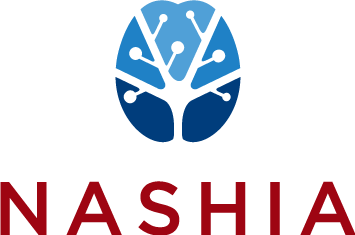What You Should Know About COVID-19 and the ADA, the Rehabilitation Act, and Other EEO Laws
From the United States Equal Employment Opportunity Commission, a technical assistance question and answer document regarding disability and employment law during COVID-19.
TeachAids Concussion Education Product Suite
NASHIA has partnered with TeachAids, a nonprofit leader in global education innovation, to distribute free state-of-the-art concussion education products to include, 1) Crashcourse Concussion Education, 2) Brain Fly-Through, and 3) Concussion Story Wall. TeachAids “research-based interactive productions are available online as standard videos and in virtual reality (free of charge) to provide athletes, parents, coaches and the sports community with the latest medical knowledge on the prevention and treatment of concussions.”
Brain Injury and COVID-19: Tips for Successful Navigation
“While research to date has focused on potential neurological impairment to COVID-19 patients, little attention has been placed on the effects of the fallout caused by COVID-19 on individuals who are living with brain injury.”
OSU: Discovery through Community Research Partnerships
This nine minute video, shared by Dr. Julianna Nemeth with The Ohio State University community, highlights how the strong partnership between ODVN and OSU discovered a huge unidentified public health crisis--brain injury caused by interpersonal violence, including partner-inflicted brain injury--as well as ODVN's CARE framework to meet the needs of survivors impacted by brain injury in DV programs.
Brain Check Survey (BCS)
This parent-completed screening tool, from the Life Outcomes after Brain Injury research center within the Department of Occupational Therapy at Colorado State University in Fort Collins, is used to establish a credible history of brain injury.
Physicians Tip Card for Patients Living with Brain Injury
Published by the American Congress of Rehabilitation Medicine (ACRM) in 2021, this tip card for patients living with brain injury is geared towards physicians.
Supporting A Trained Direct Care Workforce
The direct care workforce is a critical component of a well-functioning health system. These occupations are reliable entry points into the health sector, but limited wage potential as well as physical and emotional demands of the jobs contribute to high turnover and shortages. This article from the National Governor’s Association, Supporting A Trained Direct Care Workforce In Facility Settings During And After The Covid-19 Pandemic, discusses solutions.
Demystifying 508 Compliance
The purpose of this guide is to demystify 508 compliance and help you think through how to structure your document from the beginning to help ensure it will achieve 508 compliance. This guide condenses the best practices in 508 compliance as it relates to the documents and processes you as a state Brain Injury Program primarily use: Word, PowerPoint, and PDF.
COVID-19 Resources for Schools, Students, and Families
Department of Education COVID-19 resources for states, communities, educators, and families. These resources include guidance and policies related to elementary and secondary education, special education, postsecondary education, and other aspects of lifelong learning.
NASMHPD Brief: TBI and Behavioral Health Treatment by Dr. John Corrigan
This article is intended to raise awareness about TBI while simultaneously introducing key concepts for accommodating the effects of TBI in behavioral health care.
Preventing Suicidal Behavior After TBI
The rate of suicide for Veterans with moderate to severe TBI was 136 per 100,000 person-years, compared with 37 per 100,000 person-years for Veterans without TBI.
Funding State Brain Injury Programs: A Primer on State Brain Injury Trust Fund and Medicaid HCBS Programs
With support from the ACL TBI Program’s Waivers and Trust Fund Workgroup, NASHIA developed this primer on funding for state brain injury programs.
Criminal and Juvenile Justice Best Practice Guide and Supporting Materials
With support from the ACL TBI Program’s Criminal and Juvenile Justice Workgroup, NASHIA developed this best practice guide for state brain injury programs related to brain injury and criminal and juvenile justice.
COVID-19 and the ADA
COVID-19 related workplace issues vary widely. The Job Accommodation Network offers practical job accommodation strategies for returning individuals with disabilities to work during the COVID-19 pandemic. These strategies can enable workers with disabilities to return to the work environment, work at home, or access leave when other accommodations are not reasonable.
Online Learning for Students with Mild/Concussion, Moderate, & Severe Acquired Brain Injuries
Because students with brain injury may have difficulty with some aspects of online learning, BrainSTEPS developed a list of academic adjustments that can be used with students participating in remote online learning during the pandemic.
Virtual Education & Students With Disabilities
From Respect Ability, a guide to supporting students with disabilities in virtual learning environments during COVID-19 and beyond.
Key Questions About Medicaid HCBS Waiver Waiting List
“Unlike nearly all other Medicaid-covered services, states use optional waivers1 to provide most home and community-based services (HCBS).”
VA Traumatic Brain Injury Resources
“Traumatic brain injury (TBI) caused by exposure to explosions is common among Veterans who have served in Iraq and Afghanistan. TBI is an injury to the head that disrupts the normal functioning of the brain.”
VA Research on TBI
“Due to improved diagnostics and increased vigilance, there are now more accurate statistics on military TBI rates. The Defense and Veterans Brain Injury Center (DVBIC) reported nearly 414,000 TBIs among U.S. service members worldwide between 2000 and late 2019.”
Wounded Warrior Project
“Sometimes the most painful injuries aren’t physical. Whether it’s PTSD, TBI, combat stress, or any other mental health condition, we’re here to help you get through it.”




















